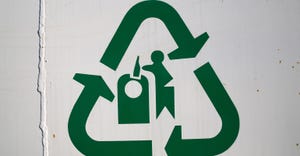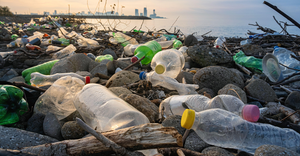May 28, 2014
Grace Schwartz
During the last decade, over 100 million tons of coal ash were produced annually in the United States as a byproduct of electricity generation, according to the American Coal Ash Association. Each year, approximately 45 percent of coal ash is beneficially re-used, while the remaining 55 percent is disposed of in landfills and wet-ash impoundments.
Certain types of coal ash, such as fly ash and flue gas desulfurization (FGD) solids, are useful as raw materials in making concrete and dry wall. But a significant fraction of coal ash can be enriched with potentially toxic and bioaccumulative elements such as arsenic, selenium and mercury. The tendency for these elements to leach from ash is one of the key aspects of environmental risk for coal ash disposal.
Currently, coal ash disposal is guided by the U.S. Environmental Protection Agency’s (EPA) Toxicity Characteristic Leaching Protocol (TCLP), which assesses the leaching potential of ash constituents. With TCLP, the sample is leached overnight with a mildly acid solution. The concentrations of coal ash constituents in the leachate are then compared to threshold values. If threshold concentrations are exceeded, the material must be disposed of according to the Resource Conservation and Recovery Act (RCRA), which requires, among other things, lined impoundments and landfills as well as groundwater monitoring.
Most coal ash passes the TCLP test and is disposed of in impoundments with less-stringent engineering controls than those required by the RCRA. But current coal ash management practices are beset with many challenges. There is growing recognition that trace elements can become mobile. Many older ash ponds do not have liners. In fact, the EPA has documented several cases of groundwater contamination stemming from unlined ponds. Ash constituents are also mobilized by impoundment effluent discharge to surface waters, a phenomenon that was recently documented by Duke University researchers in nine water bodies across North Carolina. Further, highly visible ash release events at the Dan River Steam Station in Eden, N.C., and the TVA Kingston Plant in Harriman, Tenn., have placed a spotlight on coal ash management issues.
So, why are we seeing trace element leaching from ash that passes TCLP? The TCLP test was designed to assess the leaching potential of municipal landfill contaminants by mimicking the mildly acidic environment found in landfills. This environment is very different from the conditions found in a typical ash disposal pond or in an ash spill scenario. Additionally, TCLP doesn’t include environmental parameters that profoundly affect coal ash trace element leaching, such as neutral to basic pH, oxygen gradients, the presence of organic matter, and an active microbial population.
Coal ash management is a focal point for electric utilities who, along with universities and other research agencies, are working hard to define more sustainable management practices. As a whole, the industry is moving away from wet ash disposal toward dry ash landfilling. New wastewater treatment processes, such as chemical precipitation and bioreactors, take advantage of environmental parameters and the intricacies of ash pond chemistry to reduce the concentration of ash constituents in impoundment effluent.
These new treatments are important because trace element concentrations in solid waste and ash pond effluent are increasing due to the increased use of FGD systems. At the same time, federal regulations are pending that will, for the first time, monitor mercury, arsenic, and selenium in effluent discharge. The industry’s treatment innovations are an important step in equipping utilities to adjust to these dramatic changes in coal ash management.
As coal ash management switches gears to dry ash handling, new opportunities arise to use the abundance of dry ash in novel recycling processes. For example, the United States faces a chronic shortage of rare earth elements, which are used in many different electronic products. Certain fly ashes are enriched with rare earth elements and may represent an untapped resource—though much research is needed to ensure the feasibility of the extraction process. Thus, changes in coal ash management, though challenging, can be seen as an opportunity to expand beneficial re-use and to continue to transform coal ash from a waste product to a valuable resource.
Grace Schwartz is a scholar with the Environmental Research and Education Foundation. She is currently a Ph.D. candidate in the Department of Civil & Environmental Engineering at Duke University, where her primary research focuses on the development of a new method for the hazard assessment of coal ash.
You May Also Like


